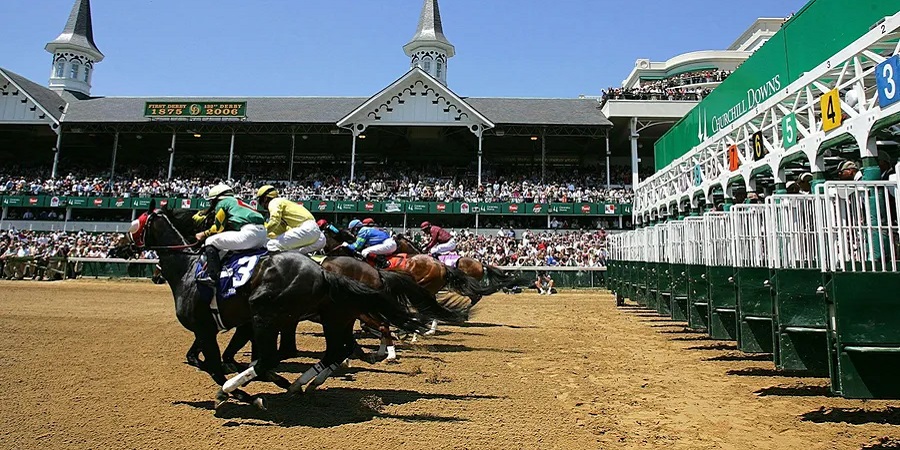The excitement of the Kentucky Derby doesn’t just lie in the spectacle of “The Greatest Two Minutes in Sports.” For many, it’s also about the thrill of betting. However, if you’re new to horse race betting, deciphering odds and understanding betting lines can feel as complex as the race itself.
This guide simplifies the essentials, explaining how betting odds work, how they fluctuate during the Derby, and how to use them to your advantage. By the end, you’ll be equipped to make informed wagers and enjoy the race with confidence.
What Are Betting Odds?
At their core, betting odds reflect how much money you can win based on your wager. But for the Kentucky Derby, odds aren’t just about payouts; they also signal a horse’s likelihood of winning, as perceived by the betting public.
The odds are displayed in a “pari-mutuel” system, which means they shift based on how the public bets on horses up until race time. Popular horses with more money wagered on them will have lower odds (and smaller payouts), while long shot horses with fewer wagers will have higher odds (and potentially larger payouts).
Learning the basics of reading odds is essential before placing your bets.
How to Read Kentucky Derby Odds
Odds are displayed in a ratio format (e.g., 3-1, 10-1, 5-2), and understanding these is key to smart betting. Here’s how it works:
- The first number refers to the profit you’ll make per dollar wagered.
- The second number represents your initial $1 bet.
For example:
- 3-1 odds mean that for every $1 bet, you earn $3 in profit.
- 10-1 odds mean your $1 bet returns $10 in profit.
Combine the profit with your original stake to calculate the total payout. For instance, a $2 wager on 3-1 odds would return $8 in total ($6 winnings + $2 stake).
If decimals like 5-2 appear, this means for every $2 you bet, you’ll win $5. It’s useful to practice this math to better understand potential payouts.
Types of Bets at the Kentucky Derby
There’s more than one way to engage in the wagering excitement of the Kentucky Derby. Understanding the types of bets you can place is crucial for making the most of your experience.
1. Straight Bets
These bets are simple, making them the best options for beginners.
- Win: You’re betting on a specific horse to finish 1st.
- Place: Get a payout if your horse finishes in 1st or 2nd.
- Show: Your horse must finish first, second, or third.
2. Exotic Wagers
These bets are more complex but offer higher payouts.
- Exacta: Pick two horses to finish 1st and 2nd in the correct order.
- Trifecta: Predict the exact 1st, 2nd, and 3rd place finishers.
- Superfecta: Nail down the top four finishers in the correct order.
3. Multi-Race Wagers
Here, you’re betting on the winners of several races.
- Daily Double: Pick the winners of two consecutive races.
- Pick 3/4/5/6: Choose winners for 3 to 6 consecutive races. Each additional race increases the challenge but also the reward.
These diverse options ensure that everyone, from casual viewers to seasoned bettors, gets a chance to play and win.
How Pari-Mutuel Odds Work in Horse Racing
Unlike fixed odds in sports betting, pari-mutuel odds in horse racing adjust based on real-time betting. This means your payout potential could change between the time you place your bet and when the race begins.
For example, if a horse opens with 10-1 odds but becomes increasingly popular with bettors, its odds might drop to 4-1 closer to post time. Tracking these changes offers valuable horse racing insights, helping inform your strategies.
Want to explore the latest horse racing news and trends? FanDuel betting platform offers all the updates you need to stay ahead!
Here’s how pari-mutuel wagering benefits the system:
- Ensures a balanced betting pool.
- Allows real-time responsiveness to bets placed.
- Creates excitement as the odds shift leading up to the race.
Key Factors to Consider When Wagering
Picking a horse to bet on isn’t just about lucky guesses. Use these tips to make smarter choices.
1. Research the Horses
Pay attention to details such as:
- Past performance records
- Trainer and jockey stats
- Track conditions (some horses thrive on muddy tracks, others struggle)
2. Assess the Odds
Shorter odds (e.g., 2-1) reflect favorites but yield smaller payouts. If you’re feeling bold, betting on a horse with longer odds (e.g., 20-1) may offer significant rewards if they win.
3. Monitor Race-Day Updates
Last-minute changes in weather, track conditions, or even horse fitness can impact performance. Stay informed by following horse racing insights throughout the Kentucky Derby season.
Common Mistakes to Avoid in Kentucky Derby Betting
Betting Emotionally
It’s tempting to bet on a horse with a cool name or one in your favorite color silks. Instead, base your decisions on data and insights.
Overcomplicating Bets
If you’re new to betting, focus on straight wagers before venturing into exotic combinations like trifectas or superfectas.
Ignoring the Fine Print
Be aware of betting minimums for certain wagers. For example, trifectas start as low as $0.50, but other bets may require $2 per combination.
Making the Most of Kentucky Derby Betting
Whether you’re a seasoned bettor or a first-time fan, understanding Kentucky Derby betting odds is the key to making the most of the experience. From straight wagers to exotic bets, there are opportunities for everyone to join the excitement and test their predictions.
The Derby is more than a race; it’s a chance to immerse yourself in the history and thrill of horse racing. With the tips shared in this guide, you’re well-prepared to make each wager an informed one.










